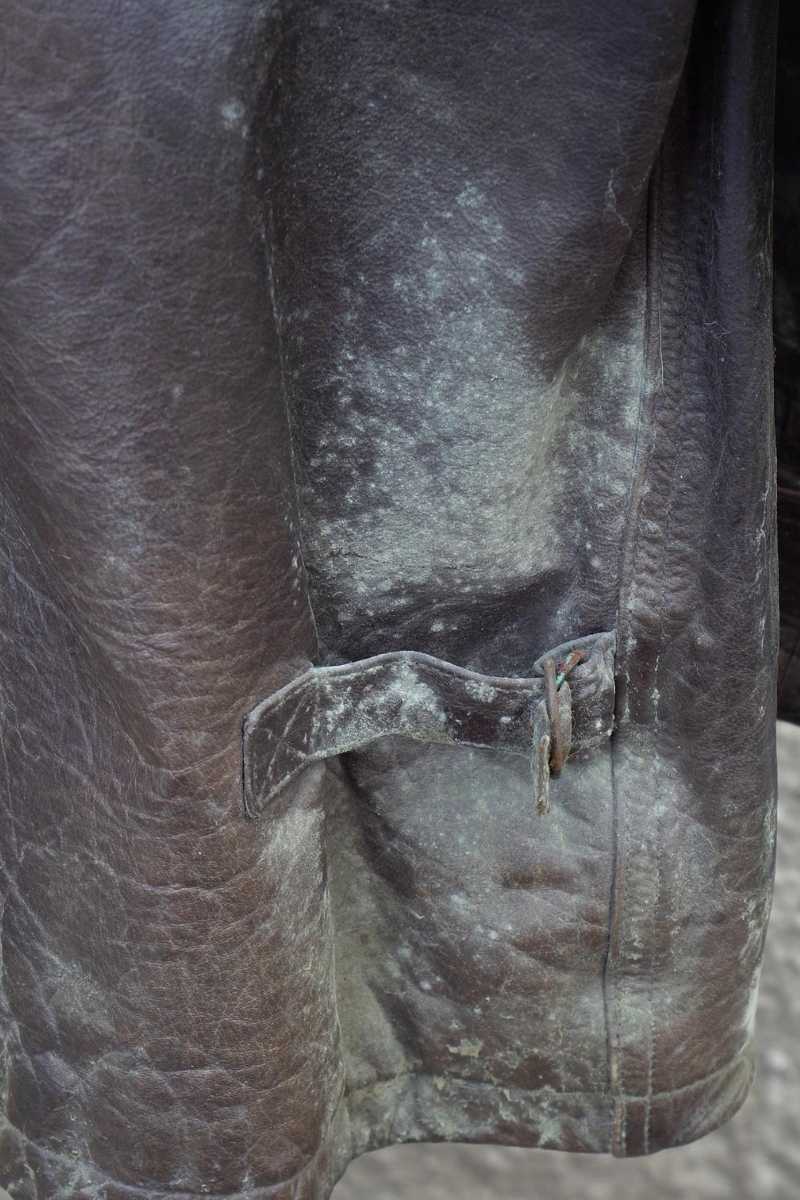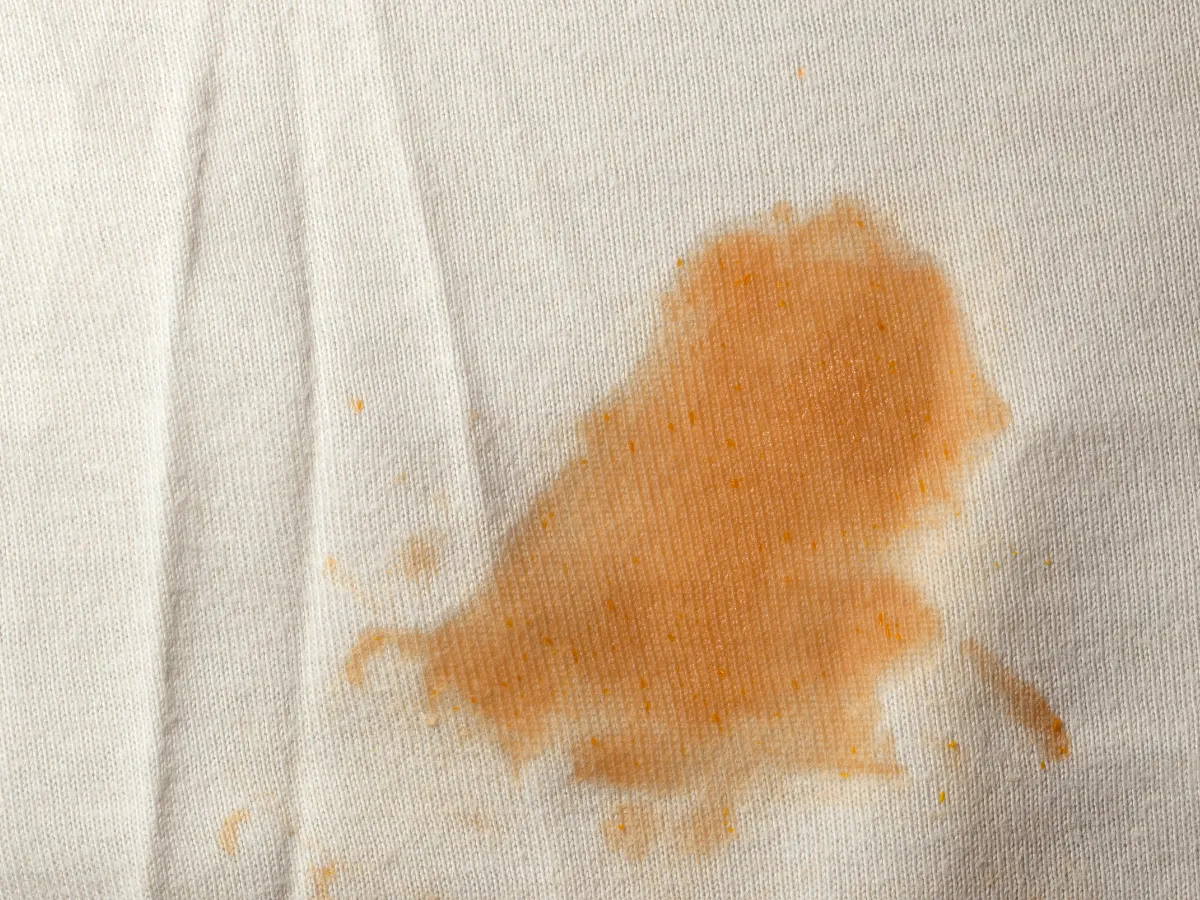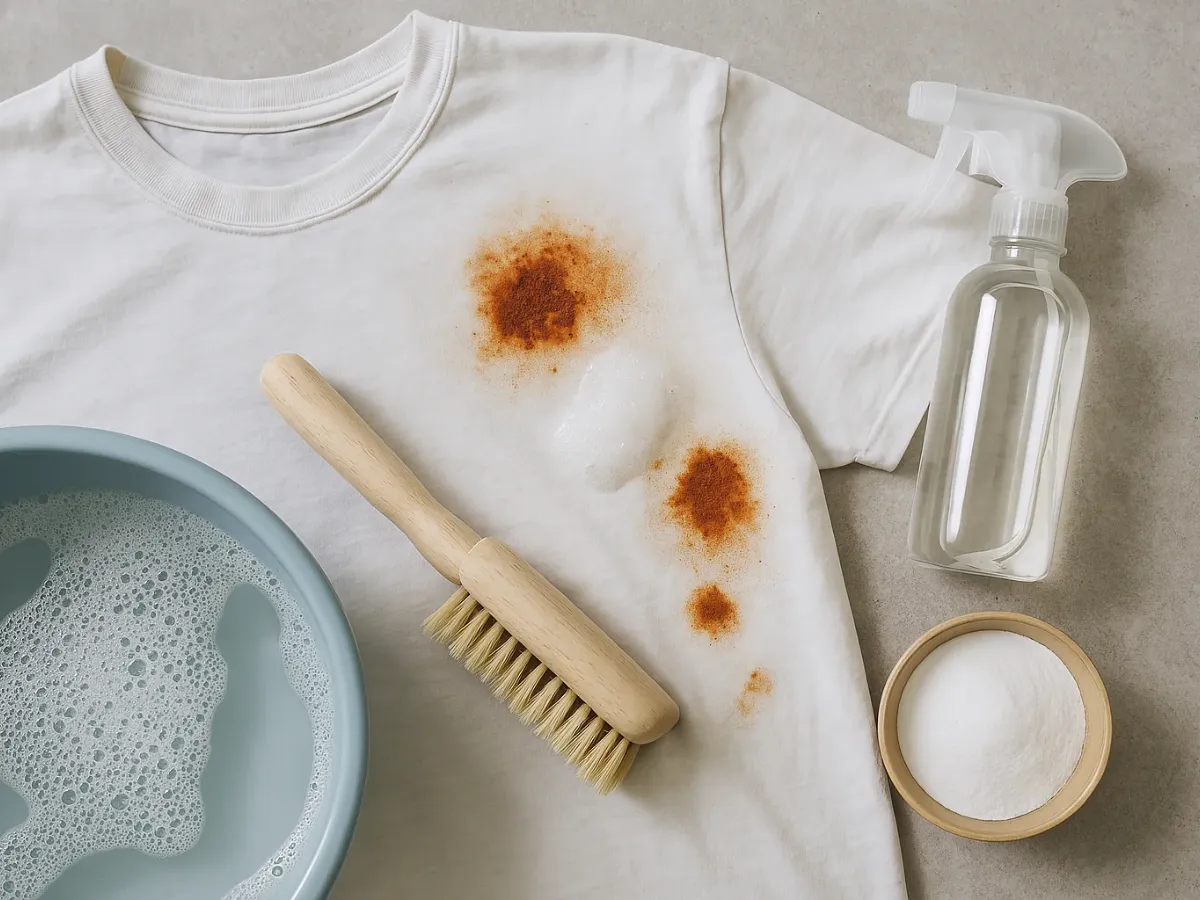Mold Alert! How to Remove Mold Stains from Clothes (White & Color)

Discovering those unpleasant greenish stains or black spots on your clothes can be disheartening. Mold not only ruins the appearance of your favorite garments with unsightly stains and a characteristic musty odor but can also be harmful to health. Fortunately, knowing how to remove mold from clothes is possible with the right methods and products, both homemade and commercial.
If you've found mold on your white, colored, or even delicate fabrics, don't give up on them. In this comprehensive guide, we'll explain why it appears, the risks involved, and most importantly, provide you with an arsenal of effective solutions to eliminate the stains, kill the spores, and prevent their recurrence.
Why Does Mold Grow on My Clothes? The Main Causes
Mold is a type of microscopic fungus whose spores are present in the air. To grow and form those visible colonies, it needs three fundamental things:
- Moisture: This is the key factor. Clothes stored slightly damp, left forgotten in the washing machine, dried in a very humid environment, or stored in places with condensation are perfect scenarios.
- Organic Matter: Clothing fibers (especially natural ones like cotton, linen, wool) and residues of dirt or sweat serve as food for mold.
- Suitable Temperature and Poor Ventilation: Warm, dark environments with little air circulation promote its rapid growth.
Understanding this is crucial for prevention, as we will see later.
Danger! Is Mold on Clothes Harmful?
Beyond the aesthetic problem and bad odor, the presence of mold on clothing can indeed be harmful to health, especially for sensitive individuals. Mold spores can:
- Cause Allergic Reactions: Sneezing, itchy eyes and nose, congestion, skin rashes.
- Aggravate Respiratory Problems: Such as asthma.
- Cause Irritations: Of the skin, eyes, and throat.
Therefore, it is essential not only to clean the visible stain but also to ensure that the spores are completely eliminated from the fabric.
First Steps Before Treating Mold
- Safety First: If there's a lot of mold, wear gloves and a mask to avoid inhaling spores when handling the garment.
- Brush Outdoors: Take the affected garment outside and gently brush the moldy area (if dry) with a soft-bristled brush. This helps remove loose surface spores without spreading them inside your home.
- Check the Label: Review the washing instructions to know what temperature and products the fabric can tolerate.
Effective Methods for Removing Mold from Clothes
The choice of method will depend on the color of the garment, the type of fabric, and the severity of the infestation.
1. Bleach (Chlorine): Powerful but Only for Sturdy Whites
Bleach is the most potent fungicide and effective at killing mold and removing its black stains on sturdy white cotton or linen clothes.
- Preparation: Always dilute bleach. A common ratio is 1 part bleach to 10-15 parts cold water. Never use undiluted bleach directly on fabric.
- Soak (with caution): Submerge the white garment in the bleach solution for a limited time (start with 15-30 minutes and monitor). Do not leave it for hours, as it can weaken the fibers.
- Washer Alternative: If your washer has a bleach dispenser, use it according to the manufacturer's instructions in a cycle with hot water (if the garment allows).
- Warnings!:
- NEVER on colored clothes, wool, silk, lycra, or delicate fabrics. It will discolor or damage them.
- Ventilate the area well. Do not mix bleach with other products (ammonia, vinegar).
- Rinse thoroughly afterward.

2. White Vinegar: The Natural Fungicide for Colors and Delicates
Vinegar is acidic and has antifungal properties, making it a much safer option for colored clothing and more sensitive fabrics.
- Direct Application: Spray white vinegar directly onto the mold stains and let it sit for at least an hour.
- Vinegar Soak: Submerge the garment in a solution of 1 part vinegar to 3-4 parts water (cold or lukewarm) for several hours.
- In the Washer: Add 1 or 2 cups of white vinegar directly to the drum or the softener compartment during the wash cycle.
- Advantages: Safe for colors (test just in case), eliminates odors, helps remove soap residue.
3. Baking Soda: Cleaner and Deodorizer
Baking soda helps clean, absorb odors, and has mild antifungal properties.
- Cleaning Paste: Mix baking soda with a little water to form a paste. Apply it to the mold stains, let it dry, then gently brush off.
- Combined with Vinegar: You can apply the baking soda paste and then spray vinegar over it (it will foam). Let sit for 15-30 minutes and brush.
- In the Wash: Add half a cup of baking soda to the drum along with your detergent to boost cleaning and eliminate odors.
Baking soda is a great laundry ally, learn more about its uses for washing clothes.
4. Borax: A Mineral Fungicide
Borax (sodium borate) is a natural mineral with good fungicidal and insecticidal properties, safe for most fabrics.
- Soaking Solution: Dissolve half a cup of borax powder in 1-2 liters (quarts) of hot water. Once dissolved, add cold water until you have enough to submerge the garment. Let it soak for several hours.
- In the Washer: You can add half a cup of borax to the wash cycle along with the detergent.
- Caution: Although natural, keep it out of reach of children and pets.
5. Sodium Percarbonate: Safe Oxygen Bleach
Ideal for white or light-colored sturdy clothes. Releases active oxygen that kills mold and whitens stains.
- Powerful Soak: Dissolve 1-2 tablespoons per liter (quart) of hot water (min. 40-50°C / 104-122°F). Soak the garment for several hours.
- In the Washer: Add 1-2 tablespoons to the drum with detergent in warm or hot cycles.
- Benefits: Less aggressive than chlorine bleach, safe for many colors (but test!).
It's excellent if you're looking to restore lost whiteness due to mold.
6. Lemon and Salt: Gentle Traditional Remedy
The acidity of lemon and the abrasive/absorbent action of salt can work on light stains.
- Paste and Sun: Make a paste with lemon juice and salt. Apply it to the stain and let the garment dry in direct sunlight. The sun will enhance the effect. Then brush off and wash.
- Ideal for: Small stains and sturdy fabrics.
7. Commercial Anti-Mold Products
There are specific products on the market (like Lysol Laundry Sanitizer or others) designed to eliminate germs and mold. Always follow the manufacturer's instructions.
The Final Wash: Kill the Spores!
After applying the chosen treatment, it's crucial to wash the garment to remove residues and dead spores.
- Hot Water (If Possible): Wash the clothes at the highest temperature allowed by the label. Heat helps kill any remaining spores. 60°C (140°F) is ideal for sturdy clothes.
- Detergent + Booster: Use your regular detergent and consider adding vinegar or baking soda to the cycle to ensure odor and spore elimination.
- Don't Overload: Wash the affected garment alone or with very few clothes to ensure a good clean.
Sun Drying: The Natural Finishing Touch
Once washed and checked that the stain is gone, drying is crucial.
- Direct Sun: If weather and fabric permit, dry the garment directly in the sun. UV rays are a powerful natural disinfectant and help eliminate any remaining mold and odor.
- Complete Drying: Make sure the garment is completely dry before storing it. Any residual moisture is an invitation for mold to return.
- Dryer: If using a dryer, a hot cycle (if the garment allows) also helps kill spores. Ensure it's completely dry.
Keep it Gone! Tips to Prevent Mold on Clothes
Eliminating it is good, but preventing it is better:
- Dry Clothes Immediately: Don't leave damp clothes in the washer or hamper for long.
- Ensure Thorough Drying: Before storing, check that they are 100% dry.
- Ventilate Closets and Drawers: Open doors regularly, don't overstuff them, and use dehumidifiers if necessary.
- Don't Store Dirty Clothes for Long: Dirt and sweat feed mold.
- Clean Your Washer: Perform regular cleaning cycles to prevent mold growth in the seal or drum. Discover how to clean inside your washer.
- Control Ambient Humidity: Use dehumidifiers at home if you live in a very humid area.
Frequently Asked Questions about Mold on Clothes
What is good for removing mold from clothes?
White vinegar, bleach (whites only), baking soda, borax, sodium percarbonate, or commercial anti-mold products.
How to remove black mold spots from clothes?
Diluted bleach or percarbonate for whites. Baking soda/vinegar paste or borax for colors. Brush and wash with hot water if possible.
What happens if mold grows on clothes?
It stains, smells bad, damages fibers, and can cause health issues (allergies, respiratory problems).
What kills mold on clothes?
Bleach, vinegar, borax, sodium percarbonate, and heat (hot wash, sun).
Fighting mold on clothes requires using the right products and being persistent. But most importantly, prevention is key: keeping clothes dry and storage spaces ventilated will shut the door on this unwanted guest.
Persistent Mold? You Need a Deep Clean!
If mold persists or you have large affected items (like blankets or curtains), LaColada Self-Service Laundry Ponferrada offers the solution. Our industrial washing machines with hot water cycles and the use of active oxygen (included in the wash) help effectively eliminate mold spores and bad odors. Give your clothes a second chance, mold-free, at LaColada!
Wash and Disinfect at LaColada Ponferrada!
Sebastián R.
More than 10 years at the helm of Lacolada Lavanderia Autoserivico Ponferrada and repairing industrial and domestic machinery in my spare time. You won't find unverified theories from the internet here, just real solutions tested by someone who gets their hands dirty every day.
Other Common Stain Problems

How to Remove Damp Stains from Stored Clothes
Effectively eliminate stains and musty odor from your garments.

How to Remove Tomato Stains (Sauce or Fresh)
Foolproof tricks to eliminate stubborn tomato stains.

How to Easily Remove Rust Stains from Clothes
Say goodbye to brown rust stains with these methods.